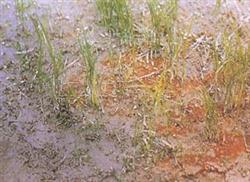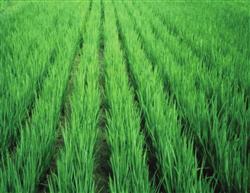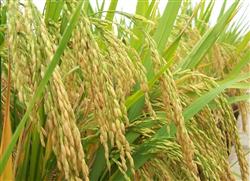Prevention and Control of Rice Diseases, pests and Weeds in Green Agricultural products

With the continuous improvement of people's living standards, people's consumption concept and behavior are changing. In particular, the demand for the quality of food is getting higher and higher, and it has begun to develop from food and clothing to pollution-free, safety and nutrition. Rice is an indispensable table staple food in modern life. in order to make the majority of consumers eat rice at ease, we must strictly check the disease prevention, insect control and weeding of rice production, so as to control the quality of green rice from the land to the dinner table. to ensure people's health. Over the past few years, we have explored the prevention and control of diseases, pests and weeds in green rice: one is to adopt agricultural measures; the other is to use low-toxic, low-residue and efficient pesticides to reduce pollution and ensure the quality of rice. The specific practices are as follows. (1) the prevention and control of rice diseases is to select disease-resistant varieties and to strengthen fertilizer and water management. Increase the application of organic fertilizer to prevent excessive nitrogen fertilizer, too late, reasonable close planting, reasonable irrigation; third, do a good job in forecasting. To provide the basis for "prevention of early, small, and prevention"; fourth, chemical control. 1.1 Control of diseases at seedling stage the main diseases of rice at seedling stage are evil seedling disease, bacterial wilt and bacterial wilt. (1) Prevention and treatment of evil seedling disease: 10% soaking seed Ling with water 5000 times. That is, 2mL medicine mixed with water 10kg can soak seeds 6-8kg. (2) using Wobida brand DSK rice seedling strengthening agent. The contents of the three small bags of DSK in the big bag were poured out and mixed evenly, and then mixed into the screened 1 cubic meter (1050-1150kg) pH value less than 6.5. the nutrient soil can be used in 60 square meters of seedling field and watered after leveling. This seedling strengthening agent integrates the three functions of disease prevention, acid regulation and fattening, and has a control effect of 99% on evil seedling disease, bacterial wilt and bacterial wilt. (3) Prevention of bacterial wilt and bacterial wilt: spraying 50 square meters of seedling bed with Ruimiaoqing 50mL mixed with water 100kg has obvious effect in preventing and controlling soil-borne diseases such as Rhizoctonia solanacearum, bacterial wilt and stunting, and it is the first choice at present. 1.2 Prevention and control of Honda diseases in early July, rice blast is easy to occur in low temperature and rainy weather. Spraying 50mL leaves with 75% Biyan 20g plus micro-fertilizer oasis No. 4 per 667m2 can not only prevent rice blast but also promote precocious maturity. (2) Prevention and control of rice pests 2.1 agricultural measures. Shallow water irrigation was carried out during the peak spawning period of adults; when the larvae were harmed, the field was drained and dried, and weeds on the roadside and ridges were removed at the same time, so as to reduce the source of insects and reduce the harm and drug dosage. 2.2 the key to chemical control of green rice production is the pest control technology. Resolutely put an end to the use of highly toxic, highly toxic, high residue pesticides and teratogenic, genetic mutation, carcinogenic pesticides. Spraying 50-60mL with 40-60kg against leaf miner, negative mud worm and rice chironomid with low residue and high control effect. (3) Prevention and control of rice weed damage 3.1 Seedling bed weeding (1) Wind selection and screening: sift out grass seeds and impurities in seeds to improve seed cleanliness and reduce the occurrence of grass damage. (2) Chemical weeding in the seedbed: with 40% 20mL EC mixed with water 6kg, sprayed on the covering soil of the 50-60 square meter seedbed, and immediately covered with plastic film. 3.2Honda weeding (1) close weeding: when preparing and soaking the field, apply 80-100mL with poisonous soil every 667m2, add 10g Vernon to the plot with more trigongrass, keep the water layer 3-5cm and then transplant seedlings. 10-15 days after transplanting, mixed with urea and 40-60mL per 667m2, plus 10 grams of Weinong or grass to kill weeds for the second time. (2) weeding after seedling: 5-7 days after transplanting, Marchet 100-120mL was used every 667m2, plus Vernon or Caokexin 10g, or rice seedlings were slowed down thoroughly 10 days after transplanting, and 70-80mL was used every 667m2.
- Prev

Zinc fertilizer for rice, disease resistance, high yield and health
Rice enters the jointing and panicle stage, which is not only an important period for the transformation from vegetative growth to reproductive growth, but also a key period to determine yield. To do a good job in the field management of rice in the middle and later stage is very important for protecting full panicle, attacking large panicle, shaping high-yield plant type and setting up high-yield shelf. First, the characteristics of seedling situation according to the survey on July 21.
- Next

High-yielding cultivation techniques of single-season Direct seeding Rice
Direct seeding single night has the advantages of easing seasonal contradictions, reducing labor intensity, labor-saving, cost-saving, seed-saving and seedling-saving, and its yield is generally above 500kg, which is welcomed by the majority of farmers. According to the planting experience over the past few years, it is summarized as follows: first, select and breed excellent varieties, do a good job in field leveling, improve sowing quality and strength.
Related
- The first cup of black tea in spring, the flavor and history of tea gardens in Kenya, Africa
- The computer can not only choose potatoes, but also grow tea rice. AI will grow winter oolong tea champion.
- It is not only the inflated tea bitten by insects, but also engraved with the four seasons tea in Beipu.
- The Oriental Beauty Tea Festival in Zhuxian County takes the stage at the weekend to experience the plus-size feast of oil tea.
- & quot; Oriental Beauty Tea & Exploration of Emei in Hsinchu, the hometown of quot;
- The new variety of strawberry "Tainong 1" dessert is the first choice with mellow aroma. Crimson gorgeous
- History of Tea in Taiwan: from Wild Inner Mountain to Export Tea Garden
- Two types of Taiwan Oriental Beauty Black Tea won the British three-Star Award for Childhood Tea Xiang Zhang Jiaqi changed from pilot to champion tea maker.
- Banana species and varieties: the planting history of Taiwan Xianren banana and dwarf banana is long, is banana disease resistant?
- Coffee planting Technology: Qianjie Coffee from Seedling to harvesting

